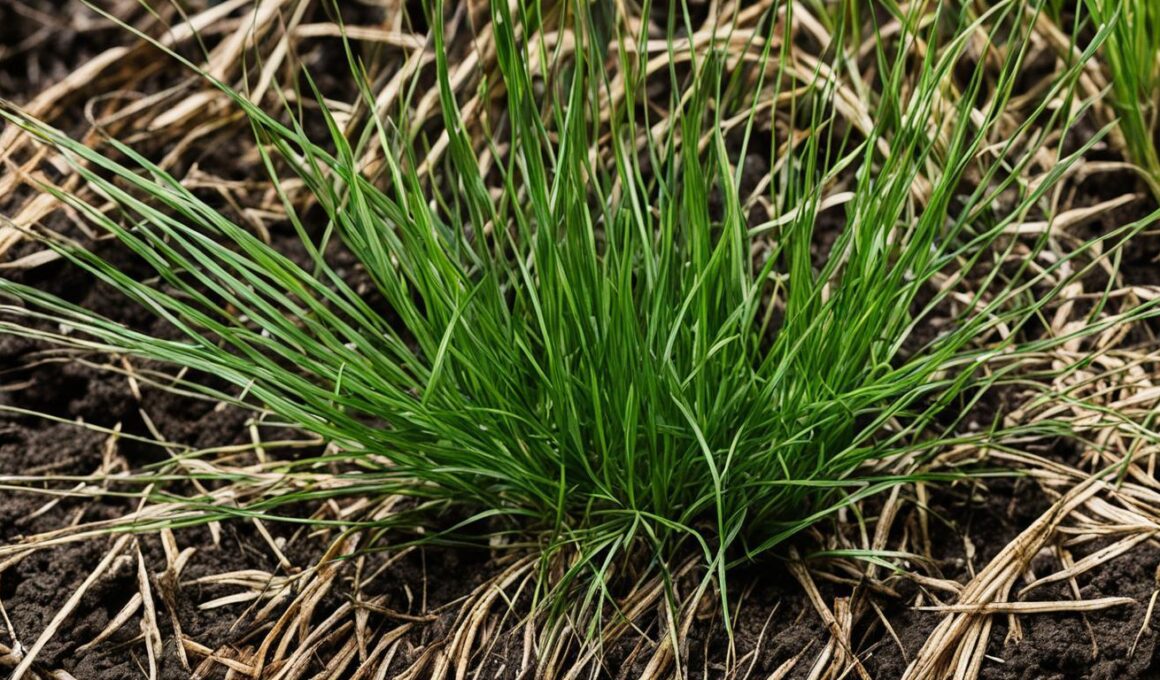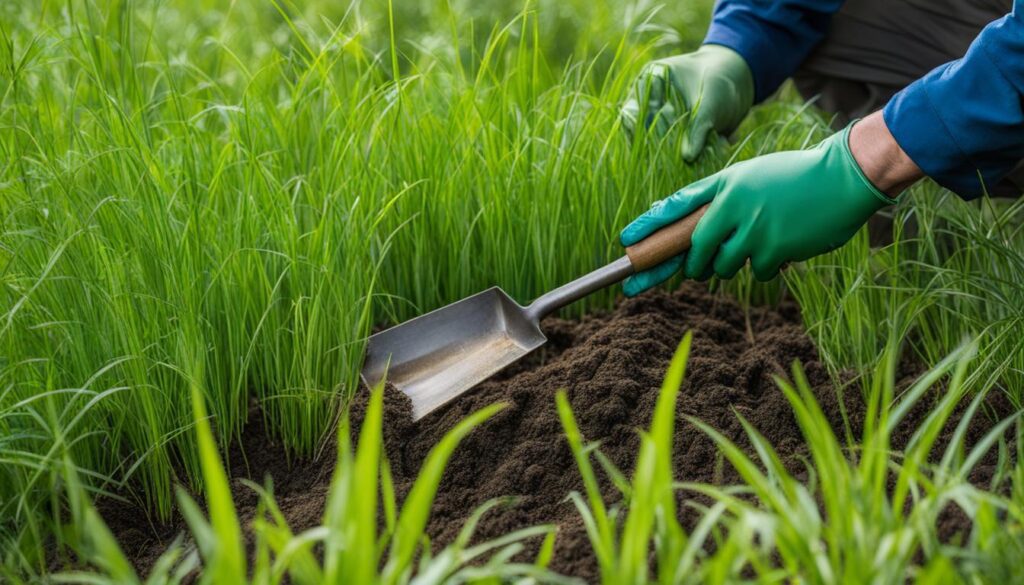If you’re dealing with the invasive weed known as nutsedge or nutgrass, you know how challenging it can be to get rid of it. Traditional weed control methods may not always be effective, but don’t worry, there are natural and eco-friendly ways to tackle this pesky plant. In this article, we’ll show you how to eliminate nutsedge naturally, providing you with effective techniques for natural nutsedge removal and eco-friendly nutsedge control.
Identifying and Understanding Nutsedge
Nutsedge, also known as nutgrass, is not your typical grass. It is actually a weed that belongs to the sedge family. Unlike regular grasses, nutsedge spreads through underground structures called rhizomes and nutlets, which can make it challenging to control. One of the distinguishing features of nutsedge is its triangular stem and distinctive shiny leaves, setting it apart from most grass varieties.
When it comes to growth, nutsedge outpaces most grasses, allowing it to quickly dominate your lawn or garden if left unchecked. This invasive weed is a perennial plant, meaning it lives for several years, and it reproduces through both seeds and tubers. In the spring, nutsedge starts its growth cycle, and by late summer or early fall, it produces seeds, further contributing to its spread.
Understanding the characteristics and growth cycle of nutsedge is essential for effective control. By being able to correctly identify this weed and knowing how it thrives, you can take the necessary steps to prevent it from overtaking your yard.
- Nutsedge is not a grass, but a weed belonging to the sedge family.
- It spreads through underground rhizomes and nutlets, making it difficult to eradicate.
- The triangular stem and shiny leaves are distinguishing features of nutsedge.
- Nutsedge grows faster than most grasses and can quickly become the dominant species in your lawn or garden.
- As a perennial plant, nutsedge reproduces through seeds and tubers.
- The growth cycle of nutsedge begins in the spring, with seed production occurring in the late summer or early fall.
Natural Methods for Nutsedge Removal
If you prefer a natural approach to get rid of nutsedge, there are several methods you can try.
One effective method is hand-pulling nutsedge. This simple but tedious technique involves physically removing the nutsedge plants from your lawn or garden. When hand-pulling, it’s important to remove the entire plant, including the roots, to prevent regrowth. By consistently and diligently removing the nutsedge plants, you can significantly reduce their presence in your yard.
Another natural method is smothering nutsedge. To smother nutsedge, cover the affected areas with layers of mulch or newspaper. This creates a barrier that deprives the nutsedge of sunlight, preventing it from growing. Smothering is particularly effective for small areas or garden beds where you want to limit the nutsedge’s spread. Regularly inspect the smothered areas and remove any nutsedge that manages to grow through the covering.
To prevent the spread of nutsedge, it’s crucial to be proactive. Regularly inspect your lawn for any signs of nutsedge growth and remove any plants you find as soon as possible. By addressing the issue early on, you can prevent the nutsedge from spreading and establishing a larger presence in your yard. Additionally, taking steps to prevent seed spread, such as mowing the lawn regularly and avoiding overwatering, can help control the spread of nutsedge.
Incorporating these natural methods for nutsedge removal into your lawn and garden maintenance routine can help you effectively control this invasive weed while minimizing the use of chemical herbicides. Remember, hand-pulling, smothering, and preventing the spread of nutsedge are all key strategies for achieving natural nutsedge control.
Conclusion
Nutsedge can be a persistent and invasive weed, but there are effective and eco-friendly methods to control and remove it from your lawn or garden. By implementing natural nutsedge control tips, you can maintain a healthy and weed-free outdoor space without the use of harmful chemicals.
One of the most reliable methods is hand-pulling nutsedge. Take the time to physically remove the entire plant, including its roots, to prevent regrowth. Remember to be consistent and thorough in this process to ensure long-term success.
Another natural approach is smothering nutsedge. Cover it with layers of mulch or newspaper to deprive the weed of sunlight, preventing it from growing. This method works best for small areas or garden beds.
Additionally, practicing proper lawn maintenance is crucial. Regularly inspect your yard for any signs of nutsedge and promptly remove any plants you find. By preventing the spread of nutsedge seeds and maintaining a healthy lawn, you can effectively manage the weed and prevent it from taking over your yard.
Implementing these natural nutsedge control tips, such as hand-pulling, smothering, and maintaining a healthy lawn, will allow you to effectively remove and prevent the spread of nutsedge in an eco-friendly way. By consistently following these strategies, you can enjoy a beautiful and weed-free outdoor space all year round.
Can Nutsedge Removal Methods Also Work for Getting Rid of Prairie Dogs Naturally?
Yes, nutsedge removal methods can also be effective for getting rid of prairie dogs naturally. By using natural methods to control nutsedge growth, such as mulching or hand-pulling, you can create an environment that is less hospitable for prairie dogs, ultimately helping to reduce their presence in the area.










